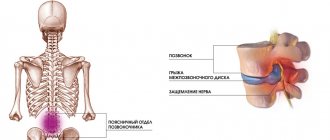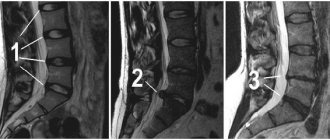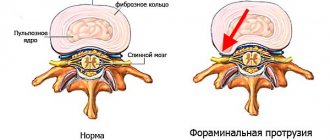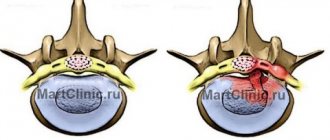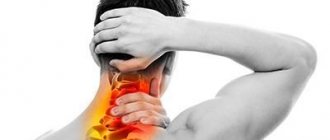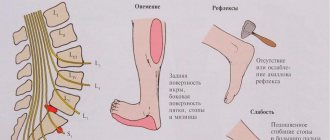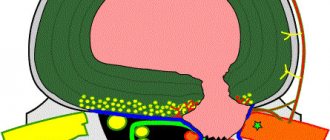- home
- Articles
- Schedule of illnesses
- Will they be accepted into the army with a hernia in 2021?
»
»
»
Updated: September 14, 2021
A hernia is a tissue pathology accompanied by protrusion of a person’s internal organs through the resulting defect. All types of this disease have similar symptoms, but in the initial stages they can go unnoticed. Sometimes pathology can be detected during a draft medical examination. In such cases, many young people ask the question: will they be accepted into the army with a hernia in 2021?
Hernia symptoms
A hernia can be congenital or acquired under the influence of external factors. There are several types of violations of this type:
- inguinal;
- umbilical;
- intervertebral;
- femoral;
- diaphragmatic.
The most common acquired hernias are the first three types.
In most cases, the disease is treated through surgery.
The main symptoms of a hernia include:
- periodic occurrence of pain, as well as a feeling of discomfort when the abdominal muscles are tense;
- characteristic protrusion in the area of development of pathology;
- frequent constipation and bloating.
Symptoms of a hernia, in which exemption from the army is possible, are indicated in the RF Regulation of 07/04/2013 No. 565 “On approval of the regulations on military medical examination.”
Article 60 in the list of the Schedule of Diseases covers hernias of any localization.
Possible causes of the disease:
- defects of the abdominal wall of congenital origin;
- decreased tissue elasticity;
- operations in the abdominal area;
- excessive physical activity;
- lifting weights.
Each type of hernia has certain characteristics, so admission to service in the armed forces of the Russian army depends on the type of disease.
Causes
The most common cause of herniation of the lumbar spine is osteochondrosis. Degenerative processes in cartilage and narrowing of the space between the vertebrae inevitably lead to gradual protrusion of the discs. Predisposing factors also include:
- predominantly sedentary work, physical inactivity;
- increased body weight (creates excess load on the spine);
- high growth;
- alternating long periods of inactivity with excessively intense physical activity;
- back injuries;
- systemic dysplasia of cartilage tissue, muscles, etc.;
- impaired blood supply to the lumbar region;
- infections of the spinal column and surrounding tissues (tuberculosis, syphilis, etc.);
- osteoporosis;
- uneven load on the spinal column due to poor posture, hip dysplasia, flat feet;
- work or hobbies that involve frequent heavy lifting;
- metabolic disorders and functioning of the endocrine glands;
- burdened heredity;
- poor nutrition;
- bad habits: smoking, alcohol abuse;
- professional sports with increased load on the lumbar region.
Will people with a herniated spine be accepted into the army in 2021?
Intervertebral hernia is a dangerous pathology. This is due to the pressure that is placed on the spinal cord. In severe cases, loss of coordination of movements may occur. In addition, wear of the intervertebral discs can lead to prolapse of their nucleus.
In most cases, the onset of this disease is preceded by advanced osteochondrosis. Pathology can also be caused by scoliosis or protrusion.
The mere presence of an intervertebral hernia is not grounds for exemption from military service. In this case, the general health of the conscript is taken into account. For example, if a disc herniation is a consequence of osteochondrosis, the examination will be carried out specifically for this disease.
People with intervertebral hernia are recruited into the army in the absence of pain symptoms and dysfunction of the spine. Exemption from military service is possible in the presence of limited deforming spondylosis and intervertebral osteochondrosis with pain and pronounced signs of deformation.
To confirm the diagnosis, it is necessary to provide the results of a clinical examination and an x-ray.
Treatment of lumbar hernia
Treatment requires a competent combination of drug therapy, physiotherapy, massage and other auxiliary methods. It is aimed at eliminating pain and neurological disorders, restoring cartilage tissue and nerve fibers.
Drug treatment may include drugs from the following groups:
- non-steroidal anti-inflammatory drugs (indomethacin, diclofenac, ibuprofen): block inflammation and relieve pain;
- glucocorticosteroids (prednisolone, dexamethasone, hydrocortisone): relieve inflammation and swelling, used when NSAIDs are ineffective;
- muscle relaxants (mydocalm, etc.): relieve muscle spasms that arise due to pinched roots;
- chondroprotectors (glucosamine, chondroitin): promote partial restoration of cartilage tissue, stop the process of its depletion;
- B vitamins (milgamma): improve the process of nerve impulse transmission, prescribed for radicular disorders.
In cases of severe pain, drug blockades (injection of the lumbar region with an analgesic solution) or narcotic analgesics can be used. To achieve a lasting analgesic effect, injections of long-acting glucocorticosteroids (diprospan) are prescribed.
Physiotherapy procedures are actively used both during exacerbation and during remission. They help relieve pain and muscle spasms, improve blood circulation and metabolism, speed up recovery processes and enhance the effect of medications. Depending on the symptoms, the following may be prescribed:
- electrophoresis;
- phonophoresis;
- electrical stimulation;
- magnetic therapy;
- laser therapy.
Additional treatment methods include:
- physical therapy: allows you to strengthen the muscular corset of the back;
- massage: relaxes muscles, increases blood circulation and metabolism;
- manual therapy;
- acupuncture;
- Spa treatment.
If the size of the hernia is significant and conservative treatment is ineffective, surgical interventions must be resorted to. Modern methods of hernia removal make it possible to use small incisions and shorten the recovery period.
Make an appointment
Schmorl's hernia and the army
Schmorl's hernia is a disease that is accompanied by protrusion of a disc into the spinal tissue with the formation of a compaction. The pathology can be acquired or hereditary. In the latter case, pain symptoms are usually absent.
Schmorl's hernia is not a reason for exemption from military conscription if the disease is not accompanied by pain symptoms. A conscript with this diagnosis can serve in any troops of the armed forces of the Russian Federation.
However, during a medical examination, it is important to understand the causes of the pathology and its consequences. The disease can be caused by:
- spinal injuries;
- osteochondrosis;
- osteoarthritis;
- osteoporosis;
- other diseases.
Attention! Some of the listed diagnoses are grounds for exemption from military service. Therefore, it is recommended that you read Chapter 13 of the Schedule of Diseases to check which fitness category is assigned for a particular disease.
Complications
If a hernia is diagnosed at an early stage, following the doctor’s recommendations allows you to completely get rid of the protrusion. If the patient neglects treatment, the formation increases. Ultimately, this process can cause serious complications. Particles of the disc completely block the spinal canal, compressing the passing nerve roots. Cauda equina syndrome develops, manifested by:
- severe pain;
- loss of control over urination and bowel movements;
- complete or partial paralysis of the lower limbs.
The condition requires immediate surgical attention as nerve function can be restored if the compression is relieved within 24 hours.
Will they be hired for service with an umbilical and inguinal hernia?
An umbilical hernia is a pathology in which a protrusion of part of an internal organ, namely the small intestine or greater omentum, occurs in the abdominal cavity. The disease is dangerous due to strangulation with impaired blood circulation. In such a situation, urgent surgical treatment is required. Otherwise, there is a high risk of tissue necrosis.
Admission to military service with an umbilical hernia depends on its size. If there is a slight protrusion within acceptable limits, the conscript is assigned fitness category “B” (fit to perform military duties with minor restrictions).
The basis for exemption from the army is large and medium-sized hernias with frequent relapses, which are clearly expressed in an upright position of the body during physical activity. In such cases, the conscript is assigned category “D” (completely unfit for service and subject to deregistration).
In the presence of moderate and minor dysfunctions of the internal organs, the young man is exempted from military duty in peacetime and enlisted in the reserve (fitness category “B”).
The decision to draft young people with an inguinal hernia into the army is made depending on the size of the formation, the presence/absence of relapses and the conditions under which the pathology manifests itself.
Exemption from military service can be obtained in the following cases:
- the hernia is large, relapses are observed, reduction is possible only manually or in a horizontal position (category “D” is assigned);
- the hernia is of moderate size, signs of pathology appear in an upright position during physical activity and coughing, relapses and functional disorders are observed (category “B” is assigned).
If an inguinal hernia is not accompanied by protrusion during physical activity, this condition is not a reason for exemption from the army. A conscript can be sent to any army without any restrictions.
Attention! Before assigning a fitness category, doctors may offer the conscript a deferment to undergo a course of treatment. This measure is not mandatory and is advisory in nature. The conscript makes his own decision. Refusal to undergo surgery is not considered evasion of military service.
general information
Intervertebral hernia most often forms in the lower part of the lumbar spine, as well as at the point of its transition to the sacral segment. It is this area that experiences the greatest load when the body is in an upright position. Intervertebral discs normally act as shock absorbers, dampening vibration when walking, running and jumping. Increased pressure or its uneven distribution, as well as narrowing of the joint space with osteochondrosis, leads to the formation of first protrusion and then disc herniation.
Make an appointment
Medical examination
Regardless of the location of the hernia, the conscript will need to provide the commission with a full package of medical certificates with a detailed description of the pathology and an indication of all functional disorders. If these documents are missing or not collected in full, there is a high probability that the young man will be declared fit for military service.
To obtain an exemption from military duty or a deferment, you must tell the members of the medical commission about all the symptoms of the disease. For example, a second-degree hernia may be accompanied by periodic pain and swelling at the location of the pathology. If the formation is located in the umbilical or groin area, the patient may experience discomfort when walking.
To obtain an exemption or deferment from the army for health reasons, the following documents will be required:
- conscript's outpatient card describing the details of the course of the disease;
- results of studies (ultrasonography, ultrasound of the spine);
- an extract from the medical history, certified by the signature of the attending physician.
Prevention
Prevention of lumbar hernia means caring for your body in general and the spine in particular. Doctors recommend:
- observe the work and rest schedule, get enough sleep;
- adhere to the principles of proper nutrition, ensure the supply of sufficient vitamins and microelements;
- avoid excess body weight;
- regularly engage in sports without striving for records (at the amateur level);
- walk more in the fresh air;
- do gymnastics to strengthen your back;
- avoid lifting heavy objects;
- undergo a timely examination by a doctor and follow all his recommendations.
Advantages of the clinic
“Health Energy” is a modern multidisciplinary clinic that diagnoses and treats various diseases in adults and children. We offer:
- consultations with doctors of various profiles;
- comprehensive diagnostic programs to assess the condition of the body;
- targeted examinations to make a specific diagnosis or exclude it;
- organizing remote consultations with foreign doctors to obtain an alternative opinion;
- modern and time-tested treatment regimens, selected individually;
- physiotherapy, massage, physical therapy and other auxiliary treatment methods;
- all types of certificates and conclusions, registration of certificates of incapacity for work;
- organization of rehabilitation after illnesses and injuries;
- organization of sanatorium-resort treatment.
A hernia of the lumbar spine seems harmless only at first glance. It is this pathology that can most likely lead to complete or partial paralysis of the legs and a disorder of the pelvic functions. Do not bring the disease to its extreme stage; in the early stages it can be eliminated without surgery. Sign up for a consultation with the neurologists at Energy of Health.
Treatment at the Energy of Health clinic
Lower back pain may well be a symptom of a herniated lumbar spine. If you begin to notice discomfort, seek help from the neurologists of the Health Energy clinic. We will conduct a thorough diagnosis to accurately identify the cause of pain and prescribe a comprehensive treatment tailored to the individual characteristics of your body:
- effective drugs to relieve pain and neurological disorders;
- drug blockades;
- injections of prolonged hormonal agents;
- physical therapy with the preparation of an individual set of exercises for home training;
- all types of massage;
- physiotherapy and manual therapy, acupuncture;
- preparation of documents for sanatorium-resort treatment.
